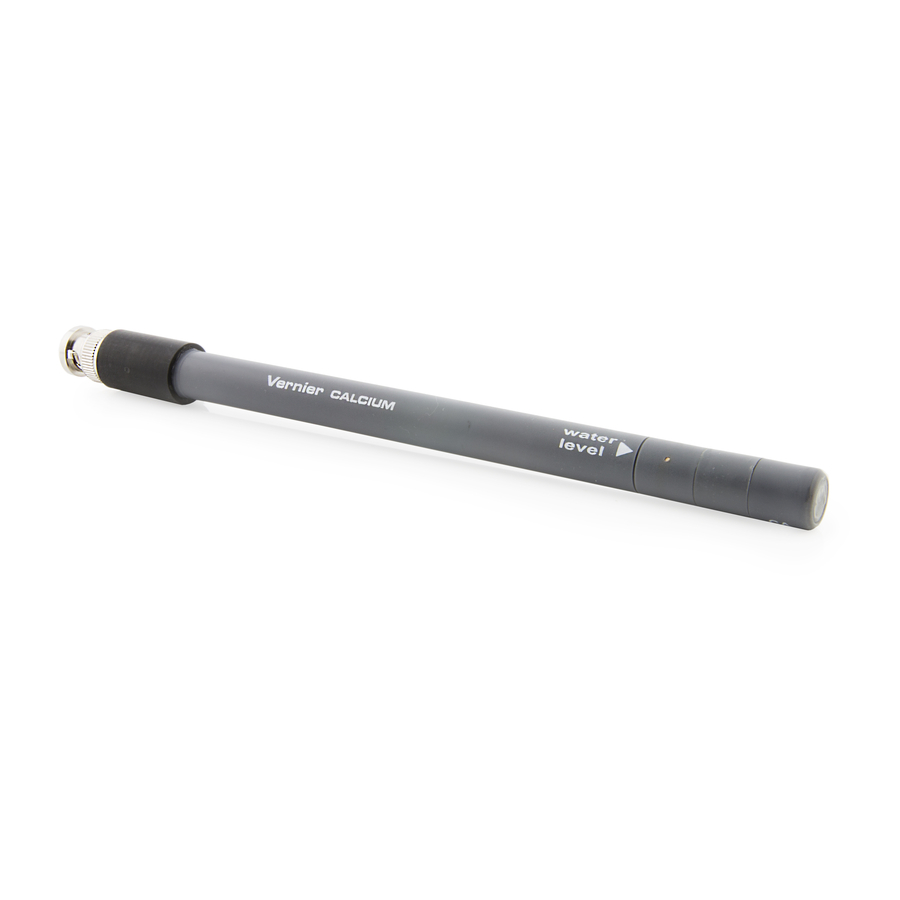Table of Contents
Advertisement
Quick Links
®
Go Direct
Melt Station
(Order Code GDX-MLT)
The Go Direct Melt Station is a sensor used to measure the
melting temperature of solid substances.
Note: Vernier products are designed for educational use. Our
products are not designed nor are they recommended for any
industrial, medical, or commercial process such as life support,
patient diagnosis, control of a manufacturing process, or
industrial testing of any kind.
What's Included
Go Direct Melt Station
l
Package of 100 capillary tubes, each with a closed end
l
AC power supply
l
Micro USB Cable
l
Compatible Software
See
www.vernier.com/manuals/gdx-mlt
Go Direct Melt Station.
Getting Started
Please see the following link for platform-specific connection information:
www.vernier.com/start/gdx-mlt
Bluetooth Connection
1. Install Graphical Analysis 4 on
your computer, Chromebook™, or
mobile device. See
www.vernier.com/ga4 for software
availability.
2. Turn on your sensor by plugging
in the AC power and turn the
temperature knob to the cooling
®
fan. The Bluetooth
LED will
blink red.
3. Launch Graphical Analysis 4.
4. Click or tap Sensor Data
Collection.
5. Click or tap your Go Direct sensor
from the list of Discovered
Wireless Devices. Your sensor's ID
is located near the barcode on the
sensor. The Bluetooth LED will
blink green when it is successfully
connected.
for a list of software compatible with the
USB Connection
1. Install Graphical Analysis 4 on your
computer or Chromebook. If using
LabQuest 2, make sure LabQuest
App is up to date. See
www.vernier.com/ga4 for software
availability or
www.vernier.com/downloads to
update LabQuest App.
2. Plug the sensor into AC power and
turn the temperature knob to the
cooling fan.
3. Connect the sensor to the USB port.
4. Launch Graphical Analysis 4 or turn
on LabQuest 2. You are now ready
to collect data.
6. Click or tap Done to enter data-
collection mode.
Connecting the Sensor
See the following link for up-to-date connection information:
www.vernier.com/start/gdx-mlt
Using the Product
Connect the sensor following the steps in the Getting Started section of this user
manual.
1. Load a small portion of a solid substance into a capillary tube.
2. Carefully place the capillary tube of solid into one of the three slots in the
aluminum heating block of the Melt Station. You can tilt the Melt Station
toward you slightly for a better look at the heating block.
3. Tilt the Melt Station up or down slightly to get the best view of the solid
sample through the viewing lens.
4. Click Collect to begin data collection. On the Melt Station, turn the control
knob to the Rapid Heat area. The red LED will come on, indicating the Melt
Station is heating. Rapid Heat will warm your solid sample at a rate of
>10°C/min.
5. Observe the temperature vs. time graph. When the temperature is within
about 10°C of the expected melting temperature of your solid sample, turn
the control knob to that temperature, slowing the heating rate to ~1.5°C/min.
6. Carefully observe your sample. At the first indication of the solid melting,
note and record the temperature. When the entire solid has melted, note and
record the temperature. The examine line can be used to help mark these
spots while monitoring the substance melting. Text can be added using the
Text Annotation feature in Graphical Analysis.
7. Stop data collection. The run is automatically stored. On the Melt Station,
turn the control knob to the Fan/Cooling setting. The blue LED will come
on, indicating that the Melt Station is cooling.
8. Prepare a second solid sample to test. Observe the temperature of the heating
block in the meter. After the heating block cools to a suitably low
temperature, you can begin heating the Melt Station again.
Care and Maintenance
Cleaning Outside Surfaces
Clean the outside metal surfaces of the Melt Station with a cloth dampened with
a mild detergent solution. Do not use organic solvents to clean the Melt Station.
Removing Broken Capillary Tubes
Follow the steps below to remove a broken capillary tube from the Melt Station.
Caution: Do not handle a broken capillary tube with your fingers. Wear safety
glasses or safety goggles.
1
Advertisement
Table of Contents

Summary of Contents for Vernier Go Direct
- Page 1 6. Click or tap Done to enter data- (Order Code GDX-MLT) collection mode. The Go Direct Melt Station is a sensor used to measure the Connecting the Sensor melting temperature of solid substances. See the following link for up-to-date connection information: Note: Vernier products are designed for educational use.
- Page 2 1. Turn off the Melt Station and allow it to cool to room temperature. Unplug Check the temperature of the heating block before inserting a capillary tube the power cord from the device. of solid sample. 2. Place the Melt Station unit on its back side so the capillary tube slots are as The heating block can remain hot for a short period of time after use, even close to horizontal as possible.
- Page 3 (indicates cooling mode with cooling fan running), Warranty yellow LED (safety shut off activated) Vernier warrants this product to be free from defects in materials and workmanship for a period of five years from the date of shipment to the How the Sensor Works customer.
- Page 4 The Bluetooth word mark and logos are registered trademarks owned by the Bluetooth SIG, Inc. and any use of such marks by Vernier Software & Technology is under license. Other trademarks and trade names are those of their respective owners.

















Need help?
Do you have a question about the Go Direct and is the answer not in the manual?
Questions and answers